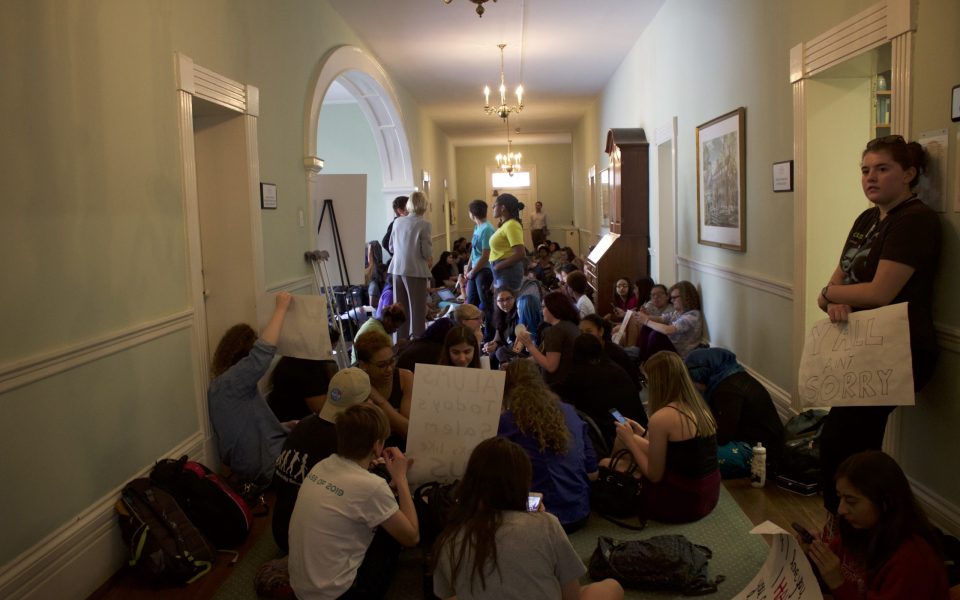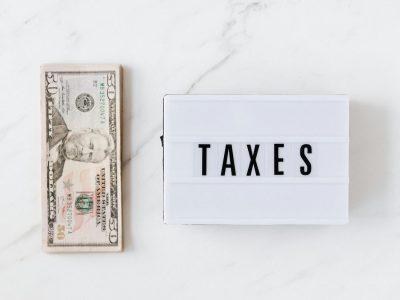1. Salem College
Observers of Triad college activism rarely have cause to consider Salem College, the private women’s school in Old Salem, despite its radical roots — its first black student was enrolled in 1785. Yet a deeply entrenched sit-in that began last week over living conditions, racial issues and gender policy continued on Tuesday, making it the longest-running current campus protest in the Triad, giving them the first slot on the list.
2. NC A&T University
A discussion of college activism in the Triad would not be complete without a hat tip to A&T university in Greensboro and the four students who changed the world at the Woolworth’s lunch counter, and the decades of protest emanating from the campus before and since. Other politically active Aggies besides the A&T Four include Jesse Jackson, retired NC Supreme Court Justice Henry Speaks Frye and US Rep. Alma Adams.
3.Bennett College
Bennett College is itself an act of protest: a college for black women founded in 1873. Bennett Belles have been fighting the power at least as far back as 1937, when they marched against movie theaters in downtown Greensboro for their segregationist policies, and for the way women of color were depicted in film. They were early on the scene in 1960 after the Greensboro Four took their seats, and have been involved in just about every protest action in Greensboro in the last 100 years. Politically active Belles include Greensboro Mayor Pro Tem Yvonne Johnson, who was the first black mayor of the city, and state Sen. Gladys Robinson.
4. Guilford College
Guilford students enthusiastically embrace the Quaker penchant for dissent. The school’s history of political protest dates back to founder Levi Coffin, who famously installed a station of the Underground Railroad near the campus. At Guilford, more students go to campus protests than football games.
5. Winston-Salem State University
The Rams’ protest bona fides start with professor Larry Little, a former Black Panther, former Winston-Salem alderman and current political advisor who helped create the first ambulance service in Forsyth County that served residents irrespective of race. It continues through 2014, when Student Body President Olivia Sedwick sang “Have Yourself a Merry Little Christmas” at the lighting of downtown Winston-Salem’s Christmas tree, then joined protesters from WSSU, Salem College and Wake Forest University in chanting “Black Lives Matter!”
6. UNCG
UNCG students — all women at the time — filled out the ranks of protesters during the Greensboro Sit-Ins. Its legacy of dissent continues today with recent campus protests of police shootings, Trump-related issues, a disruption of Bill Clinton’s speech the day before Election Day in 2016 and the UNC System of which it is a part.
7. Wake Forest University
Wake Forest is better known for its tennis program than for its student-protest activity, but Wake students were at the downtown Christmas-tree lighting in 2014 during the Black Lives Matter protest. More recently, in 2014 students protested racism on campus with sidewalk-chalk drawings and slogans during Visitor’s Weekend, and the Winston-Salem Journal reported that “hundreds” of Wake students walked out of class in November 2016 to protest the election of Donald Trump.
8. High Point University
Most recently, HPU students held a peaceful protest in September 2016 to challenge a speaking appearance by candidate Trump.
9. UNC School of the Arts
Art and protest can be closely linked. But the most recent example of a protest we can find at UNCSA was in 2009, when film students sat in against the policies of Jordan Kenner, dean of filmmaking at the school. Their biggest beef was that they were forced to integrate notes from their mentors into their films before screening them to a panel of pros in LA. The protest lasted several hours in the Film Village, with no discernible policy changes.
10. Greensboro College
In February 1960, four Greensboro College students who joined the downtown sit-ins claim that university President Harold Hutson told them they wouldn’t be allowed to graduate if they continued to support the black students. The school’s first African-American students didn’t enroll until 1969. In fairness, all of this information comes directly from the college website. The campus remains relatively quiet politically, unless you count former student Roy Carroll.
Join the First Amendment Society, a membership that goes directly to funding TCB‘s newsroom.
We believe that reporting can save the world.
The TCB First Amendment Society recognizes the vital role of a free, unfettered press with a bundling of local experiences designed to build community, and unique engagements with our newsroom that will help you understand, and shape, local journalism’s critical role in uplifting the people in our cities.
All revenue goes directly into the newsroom as reporters’ salaries and freelance commissions.





Leave a Reply